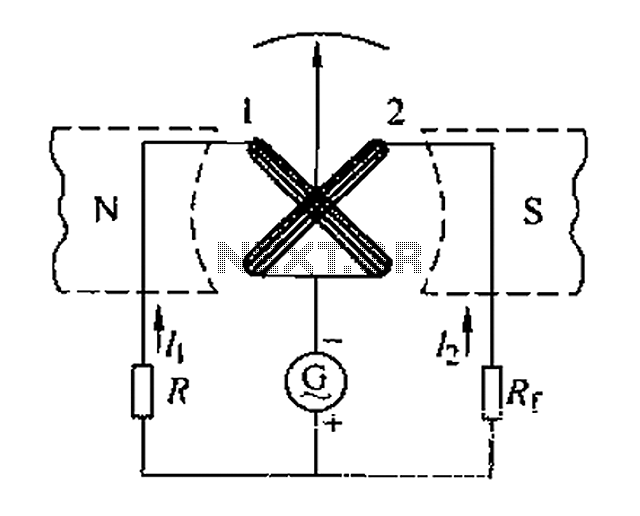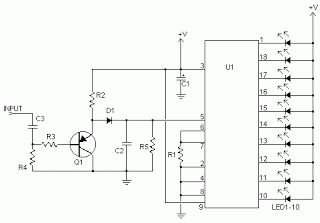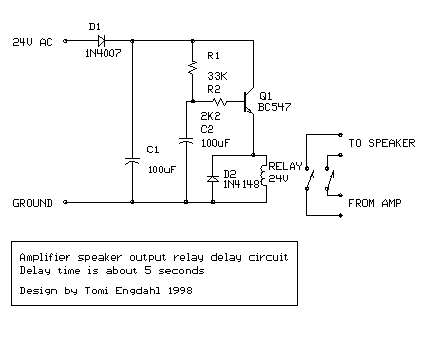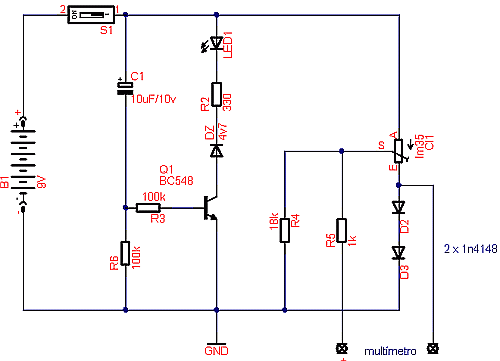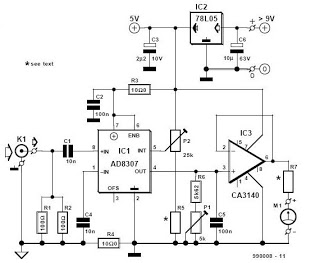
Digital pH Meter Signal Conditioner with Pulse/Frequency Output
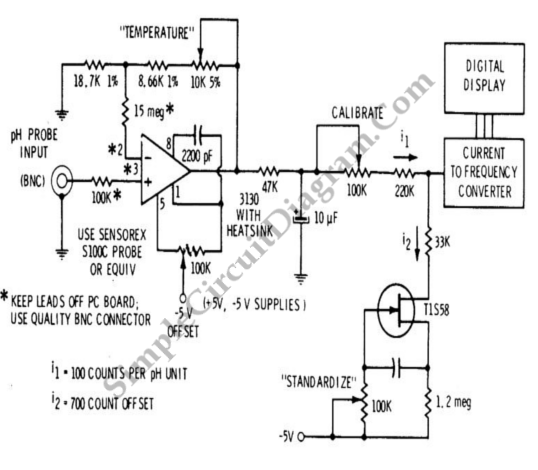
A signal conditioner for a pH meter probe requires high input impedance. The signal conditioning of the pH meter probe is achieved by incorporating a buffer.
The design of a signal conditioner for a pH meter probe is critical for accurate pH measurement. The high input impedance is essential to minimize the loading effect on the pH probe, ensuring that the probe's output signal is not significantly altered.
To achieve this, a voltage buffer, typically implemented using an operational amplifier (op-amp) configured as a voltage follower, is employed. This configuration allows the op-amp to provide a high input impedance while maintaining a low output impedance, thereby effectively isolating the pH probe from the subsequent circuitry.
In the schematic, the pH probe is connected to the non-inverting input of the op-amp. The output of the op-amp is then connected to the next stage of the signal conditioning circuit, which may include additional filtering and amplification stages, depending on the application requirements. Power supply decoupling capacitors should be placed close to the op-amp to ensure stable operation.
To further enhance performance, it is advisable to use a low-noise op-amp to reduce any potential interference that could affect the accuracy of the pH measurement. The use of precision resistors and capacitors in the feedback and input paths will also contribute to the overall stability and accuracy of the signal conditioning circuit.
In summary, the signal conditioning circuit for a pH meter probe must prioritize high input impedance through the use of a buffer, ensuring accurate and reliable pH measurements by preventing loading effects on the probe.A signal conditioner for pH meter probe is required to have high input impedance. The signal conditioning of the pH meter probe is done by providing a buffer.. 🔗 External reference
The design of a signal conditioner for a pH meter probe is critical for accurate pH measurement. The high input impedance is essential to minimize the loading effect on the pH probe, ensuring that the probe's output signal is not significantly altered.
To achieve this, a voltage buffer, typically implemented using an operational amplifier (op-amp) configured as a voltage follower, is employed. This configuration allows the op-amp to provide a high input impedance while maintaining a low output impedance, thereby effectively isolating the pH probe from the subsequent circuitry.
In the schematic, the pH probe is connected to the non-inverting input of the op-amp. The output of the op-amp is then connected to the next stage of the signal conditioning circuit, which may include additional filtering and amplification stages, depending on the application requirements. Power supply decoupling capacitors should be placed close to the op-amp to ensure stable operation.
To further enhance performance, it is advisable to use a low-noise op-amp to reduce any potential interference that could affect the accuracy of the pH measurement. The use of precision resistors and capacitors in the feedback and input paths will also contribute to the overall stability and accuracy of the signal conditioning circuit.
In summary, the signal conditioning circuit for a pH meter probe must prioritize high input impedance through the use of a buffer, ensuring accurate and reliable pH measurements by preventing loading effects on the probe.A signal conditioner for pH meter probe is required to have high input impedance. The signal conditioning of the pH meter probe is done by providing a buffer.. 🔗 External reference
